Cloudy with frequent showers.
I watched a couple of Ichneumonids working Spear Thistles: a plant I hadn't seen them on before. I built up the following sequence of shots:
Searching for a victim (left) and deploying the ovipositor (right):

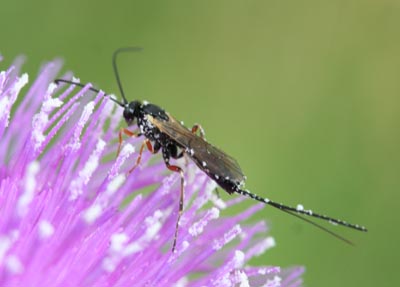
Injecting the egg into the host (left) and wrapping up and moving on to the next search (right).
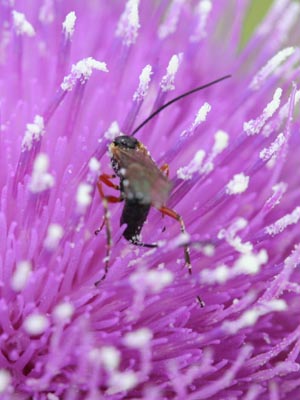
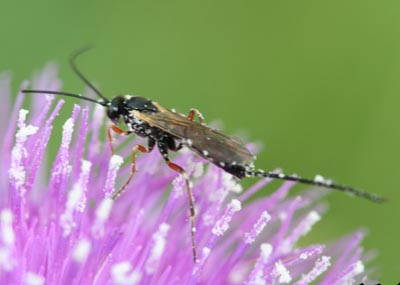
Note that when the egg is being inserted, the right antenna is out in the open, whilst the left antenna is deep in the flowerhead, sensing the exact position of the target larva.
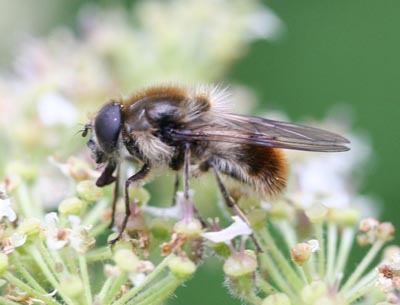
A hoverfly that I see only occasionally and in small numbers: Cheilosia illustrata. I presume the specific name comes from the fact that many other Cheilosia species are dark and nondescript.
Down by the Lake
The large lake has been populated with numerous native species of plants. From the edge I could make out Greater Spearwort and Yellow Flag Iris. The right-hand image shows the seedhead of Greater Spearwort along with an unidentified ?sedge/?rush and a Rhagonycha fulva Soldier Beetle.
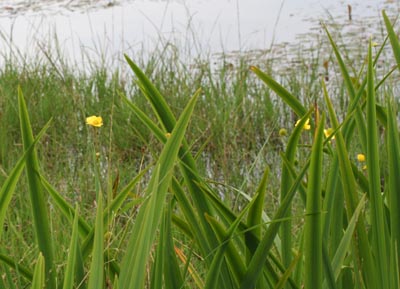


The environment was also ideal for the Common Blue Damselfly. This one led me a merry dance for several minutes until I managed to get it desensitised to my presence. Lots of insects need perseverance to get a decent image.
More water-side plants: Purple Loosestrife (left) and the seedheads of Yellow Flag Iris (right).

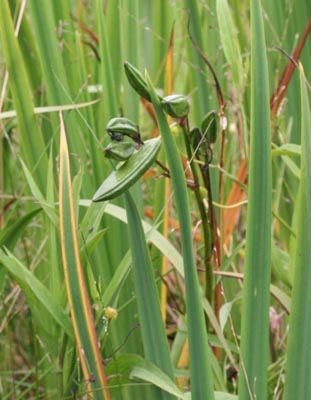
A large (12mm.) Ectemnius sp. wasp: Ectemnius are very interesting wasps: they are parasitic on hoverflies, and they have developed several characteristics that allow them to approach hoverflies in order to catch them:
1) The head/eyes are larger (in proportion) than we tend to find in wasps. This matches the large hoverfly eyes.
2) the antennae are hinged and can be folded back against the face to make them look shorter and higher - like hoverfly antennae.
3) Ectemnius species can hover much better than most wasps.
4) the abdominal pattern is very reminiscent of some hoverfly families e.g. Eupodes.
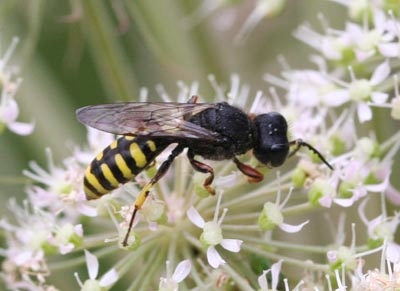
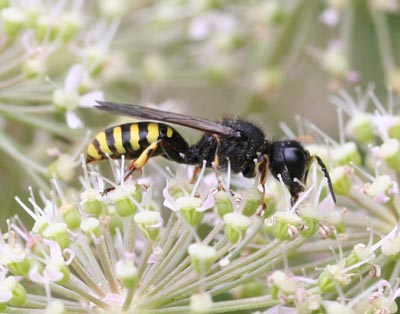
Since hoverflies use the yellow/black colouring to mimic wasps, an Ectemnius is a wasp imitating a hoverfly imitating a wasp.
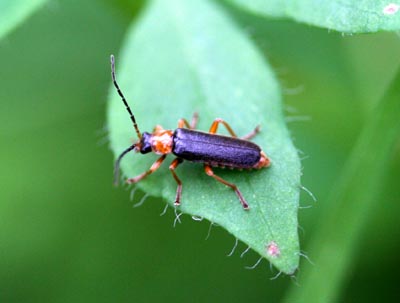
Cantharis rustica - another of the Soldier Beetles.
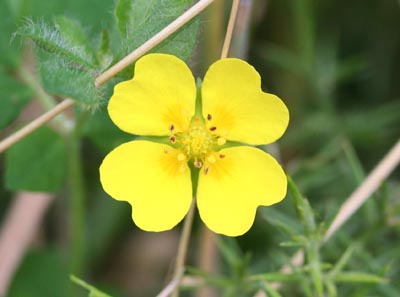
Creeping Cinquefoil - Potentilla anglica - was frequent in the scrubby area behind the pond.
Two more Phyllonorycter mines. Phyllonorycter messaniella on Beech and Phyllonorycter quercifoliella on Oak.
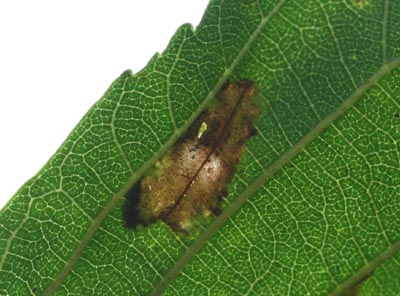

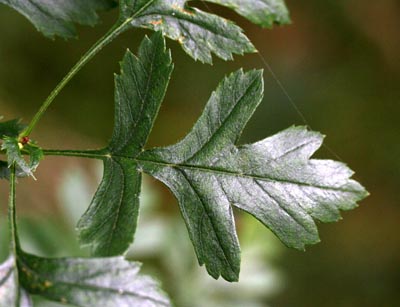
This old Hawthorn under Beech has leaves that are cut more deeply than I'm used to seeing.
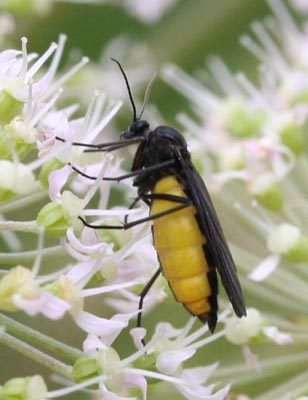
Finally, a yellow and black Sawfly that has foiled all my attempts to identify it for about 4 years. Must try harder.